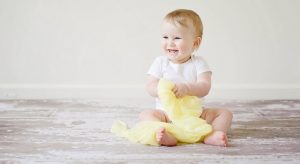Eye exams are essential for babies to ensure normal visual development and to confirm there are no vision problems that might affect school performance.
Here are commonly asked questions of eye doctors related to babies and their vision.
#1 How often should babies and children have their eyes checked?
All babies should have their first eye exam at 6 months of age, even if no visual problems are suspected.
During an eye exam, the eye doctor will check your baby’s visual development and for any visual problems such as nearsightedness, farsightedness, astigmatism, eye movement ability and eye alignment.
If no problems are detected, and your child’s eyes continue to be healthy, your optometrist will let you know when to schedule their next eye exam.
If you suspect your child has an eye condition, contact an eye doctor near you, who can diagnose and treat the condition.
SEE RELATED: Your Baby’s Vision Development
#2 What are the most common vision problems in babies and toddlers?
The most common vision problems in babies and toddlers are refractive errors (farsightedness, nearsightedness, astigmatism), amblyopia (lazy eye), strabismus (eye turn), genetic eye diseases, congenital abnormalities, pediatric ptosis and nystagmus.
#3 How does an eye doctor test for a refractive error?
When testing for a refractive error the eye doctor may use lenses and light from a small hand-held instrument to assess how the eye responds to particular targets.
The doctor may also repeat this test after dilating the eyes to enlarge the pupil and stabilize the baby’s focusing.
Infants typically have some degree of nearsightedness, farsightedness, and astigmatism not requiring correction.
Studies show that up to 50 percent of infants under 12 months have significant astigmatism, long-sightedness or lazy eyes.
#4 What can a baby see?
While babies have poor vision at birth, they can see faces at close range.
At about six weeks a baby’s eyes should be able to follow objects, and by four months the eyes should work together.
Over the first year or two, a baby’s vision develops rapidly. A two-year-old typically has 20/30 vision, nearly the same as an adult.
#5 As a parent, what can I do to help with my baby’s visual development?
There are many things a parent can do. The following are a few examples of age-appropriate activities that can help with an infant’s visual development.
From birth to 4 months
- Keep reach-and-touch toys within your baby’s focus (about 8 to 12 inches from your baby)
- Use a dim lamp or nightlight in your baby’s room
- Alternate left and right sides with each feeding
- Talk to your baby as you walk around the room
From 5 to 8 months
- Give your baby plenty of time to play on the floor
- Hang a mobile or place various objects across the crib for the baby to grab, pull and kick
- Play patty cake and other games that involve moving the baby’s hands through the motions while saying the words aloud
- Provide soft blocks that they can hold with their hands
From 9 to 12 months
- Encourage crawling and creeping
- Play hide-and-seek games with toys or peek-a-boo to help the baby develop visual memory
As a baby’s eyes are constantly changing, it’s important to get their eyes checked to ensure they are reaching their visual milestones.
LEARN MORE: Guide to Visual Development
Schedule an eye exam with an eye doctor near you who can assess your child’s eye health and diagnose any problems.


